
Susan Cummins: You said, “Your story can only get through to people if you rob them of their prejudices about jewellery.” How do you do that?
Ted Noten: I play with greed and seduce by aesthetics, using archetypes that people can recognize and loads of humor. These elements make my work possible to enter and then there are more layers of comments, criticisms, condensations of meanings. All this without being moralistic! But through absurdist mirroring.
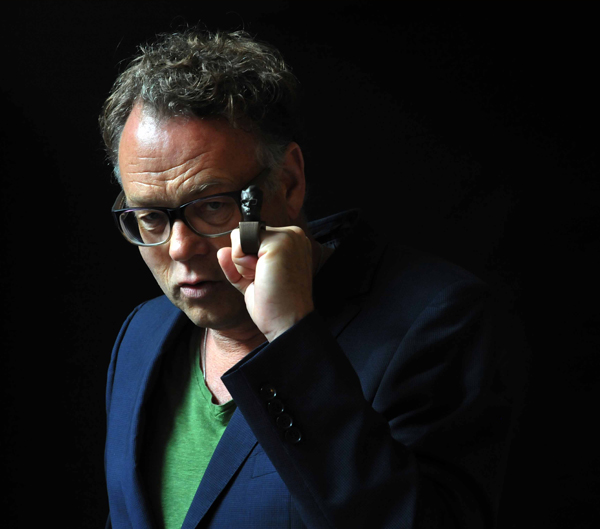
Susan Cummins: You said, “Your story can only get through to people if you rob them of their prejudices about jewellery.” How do you do that?
Ted Noten: I play with greed and seduce by aesthetics, using archetypes that people can recognize and loads of humor. These elements make my work possible to enter and then there are more layers of comments, criticisms, condensations of meanings. All this without being moralistic! But through absurdist mirroring.
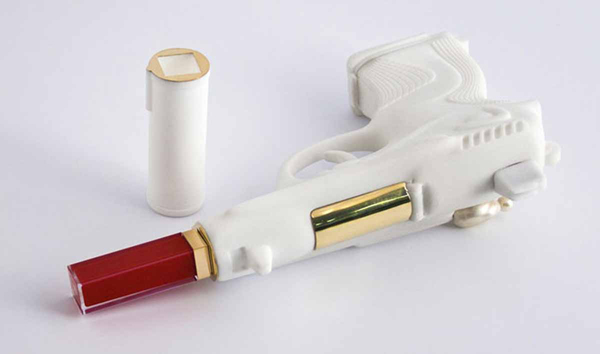
Ted Noten: Mainly I use memories and traditions, which I give a contemporary “coating.” I put them in another context. The main thing about my way of working is the context. I am easily impressed and intrigued when jewelry relates to stories and anecdotes that appear to me in daily life. For example, in the south of Holland we had a tradition that when a daughter had her first period, her father would give her a golden ring. It is just so sweet, so beautiful and sentimental. Or the tradition you have in the US that when a guy asks his beloved to become engaged he should give her a diamond gold ring that represents three months of his salary!
And besides these there are the usual themes like status, bribery (jewelry is a bribe), and banking, where you use jewelry as a way to wash your black money white and to give you the feeling that you have a saving account. Of course this is a fake, since when you sell the gold and diamonds back to the jewelry store, you only get one-fifth of the price you paid!
What is jewelry’s place in the current culture?
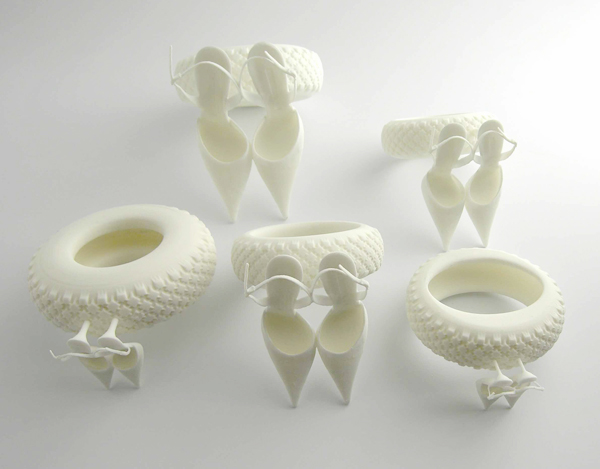
When most people wear jewelry they don’t want to wear concepts/stories or political/social confrontations. They just want a nice piece that fits with the new dress for a certain occasion. Of course there is a small group of lovely passionate collectors who see jewelry in a different way. I am very grateful to them, but besides that I like to explore new contexts and try to make art jewelry democratic. In order to find a new audience, I don’t avoid new techniques or new channels to show my work.
For most jewelers, jewelry sticks to brooches, necklaces, and some rings. I see a bigger space for what I make, like the bags and the installations, but it all starts with the idiom of JEWELRY. Because of this approach, the art, design, and fashion worlds found me. I give them an entrance by using systems, logic, and other related language that they recognize. If art people come to an exhibition and the jewelry is shown in a showcase, they won’t see the urgency and meanings and beauty of it. We can see it because we are detail oriented, ingredient freaks, or I could say … nerds.
Art has a documented database. If somebody buys an artwork and pays $50,000 for it, they have references. If somebody sees a nice necklace and there is no gold or diamonds in it, how should it be valued or how can the price of, for example, $20,000 be justified? I am so glad that more and more PhDs are writing their theses about jewelry. There are people in Holland who want to initiate a jewelry database, which is fantastic, but in the meantime we keep on explaining and excusing why the piece costs that amount. (Advice: connect yourself to Artefact, a website which is seen all over the world.)

Ted Noten: We should never forget that jewelry was our first way to communicate by adorning. When a man killed a lion, he would knock the teeth out of its mouth and make a necklace from it in order to show his bravery and in order to get the girls to chase him.
We should never forget that the jeweler/craftsman had a huge reputation in the Middle Ages. We called ourselves alchemists and we were connected to the kings and churches, the powers of the day.
Jewelry has a rich history; there were wars for gold and competition between various religions to show their power and wealth by making fantastic jewelry and other artifacts. Guess what—there was never a war caused by a painting! There are stories, anecdotes, even fairy tales about jewelry, and a diamond is still a girl’s best friend. We had religious jewelry (Masonic), social jewelry (punks), and political jewelry (against atomic energy). Now we have wedding rings that all look the same all over the world, and the pearl necklace. The diamond industry minimalized the fantasy of the buyer. I am talking in black and white now; because of course there are exceptions in ethnic work, even in Holland, and with certain regional jewelry, which is still very interesting. For example the former fishermen of Urk wear a golden earring in their left ear. It is a beautiful adornment, even when the wearer is an administrator for the government. This comes from hundreds of years ago, when fishermen drowned and they were found dead on the beach; the value of the gold would guarantee them a funeral.
What are you trying to communicate to your audience?
Ted Noten: I don’t understand why jewelry is not accepted by art people or even seen as an equivalent. It used to be accepted in the early 20th century (think about Lalique and Fabergé). At that time there was no hierarchy, and painters, musicians, dancers, makers, craftsman, etc. had a dialogue. Think about the fantastic creator and entrepreneur Diaghilev. In some ways we lost the intellectual discourse, and in some ways it is understandable. A craftsman likes to make, likes to have his fight with the material and not with concepts. I make my own stories and my own political or humanistic comments or even my own wonderings, and in that way I am an artist.
If somebody (even only one person) recognizes something I wanted to say or even makes up a story about it, I am happy, and it is not mine anymore. Wearability never came up as a field of interest. I don’t care if somebody buys a ring and puts it on his table or if he takes it with him to the grave. I can live with either one.
Jewelry to me is a medium, like the canvas for a painter. But of course when I see somebody wearing one of my brooches in the subway, I notice.
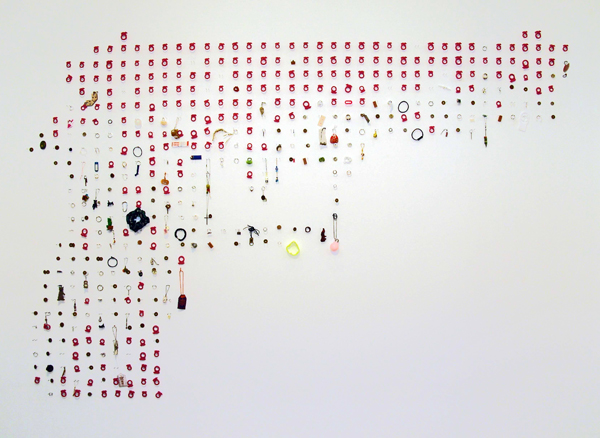
Ted Noten: More than 12 years ago I initiated the project called chew your own brooch. It is a Wrigley’s gum package in a box. You could buy the kit and go home and chew. Then you would send the result to me and I would cast it in silver, gold-plate it, and send it back to you. All this was serious, but of course also totally hilarious because buyers panicked and started to phone me to see if I could chew it for them. I even had workshops on Saturdays in my studio.
Later on I found that the drive to design this piece was to make “art” jewelry democratic, but it was also to comment on the idea that people have when they see a painting and exclaim, “my eight-year-old daughter can do better!”
The Mercedes Benz-Brooches came from a real car, which I cut into pieces.
The Wanna Swap Your Ring (where people swap their own jewelry for a pink nylon 3D-printed pig ring with a pearl necklace) is still my favorite. I have done this project now in several cities all over the world and the final result is different every time. The swapped rings mirror the soul of the city.
How concerned are you about your own self-expression? How concerned are you about the end wearer or owner of your work? Which do you think more about?
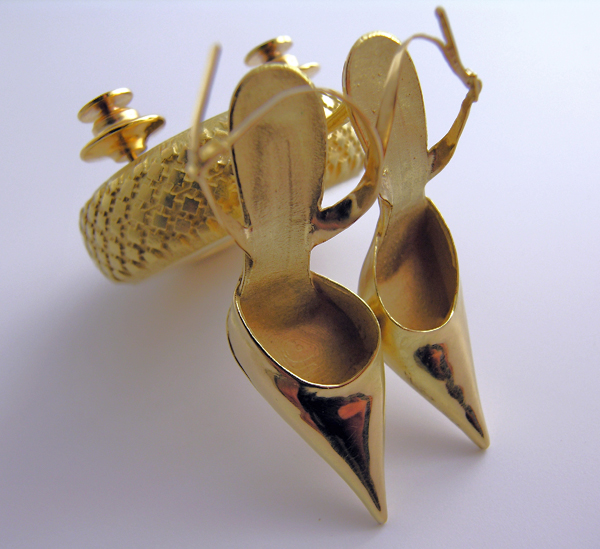
I understand that you now have a full staff in your atelier and that instead of producing objects and projects under you own name, you produce under the name of Atelier Ted Noten (ATN). Can you describe how that works?
Ted Noten: ATN is a playground. Mostly I initiate and then as a team we work on projects or museums like assignments. Due to this teamwork, I can do big projects and reach new audiences. I used to feel sorry for myself when I had to work for two years for a gallery show and was never guaranteed that I would sell a piece.
The main stake for myself would be something like the exhibition I curated last year at the Stedelijk Museum in den Bosch, titled Framed by Ted Noten, and other works which I don’t show since they are my alter ego.
Besides working on my own oeuvre, I get help from freelancers who are connected to ATN:
- Marcel van Kan is my conceptual conscience.
- Cathelijne Engelkes is great at daily short confrontations, and she relieves me of all the daily administration, press releases, etc.
- Mark Sturkenboom is more of a designer/fighter, so we can discuss finalizing.
- And other people take over work that I don’t have the skills to learn, like 3D drawers, website designers, and writers like Gert Staal who can theorize and contextualize my work. I can’t do this and once my intellect comes into play, I fail. Well, okay, I am an intuitive intellectual.
It is crazy to think that we have to do everything ourselves. Find the right people with the right skills, and there will be a fruitful working environment with some fights but in the end with rich statements (unless you stray into never-ending discussions about opinions).
As you look over the last 25 years, how do you see yourself changing?
Ted Noten: Grumpy old man … no, I am joking, I have become more gentle with myself partly because I trust my intuition, and of course by having 25 years of experience accompanied by discipline, passion, and also luck. Luck in the sense that I have good people around me—like other artists, gallery owners, mecenaes (collectors), and musea (museums). It takes a while but if you stay close to yourself—that’s the only thing that makes you unique, and being more interactive and less introverted.
How do you see the world changing in its response to your work?
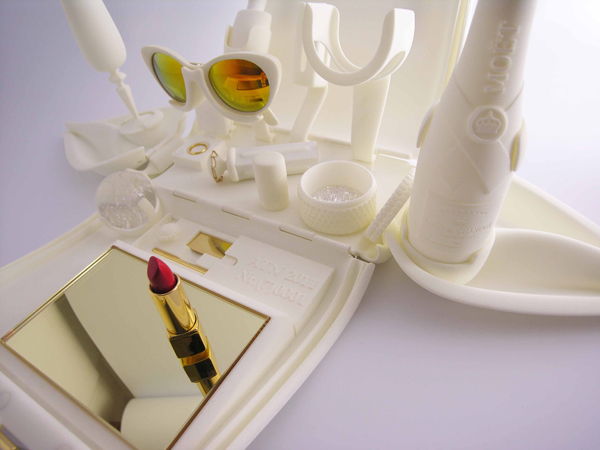
How do you see the contemporary jewelry field changing?
Ted Noten: Not. We are still in the discourse of making small sculptures, which is like a psychological disorder of falling in love with compositions and materials and then suddenly it’s a brooch. It is like the horse that pulls a carriage. It has to focus, so it wears flaps on either side of its eyes. Jewelry should be embedded in its tradition and at the same time break with the tradition. I embrace diversity. There is no need to all do the same thing and compete and then get frustrated that we cannot live from the works we make. Challenge other disciplines, create new markets, find people to work with. Whoever declared that a jeweler should only work on his own in order to protect his own style and handwriting?
Research the history and research today’s needs and urgencies and especially possibilities, but stay stubborn, authentic, and mainly do what suits you and that gives you pleasure and JOY.
Thank you.
Ted Noten: Thank you, too.




